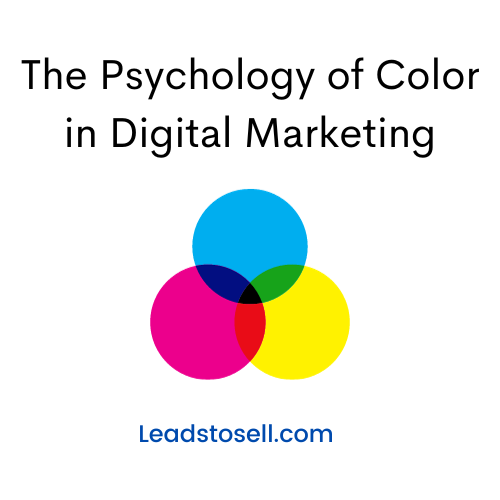The Psychology of Color in Digital Marketing: Have you ever wondered why fast-food restaurants often use red in their logos, or why hospitals and clinics usually go for calming blues and greens? It’s not just a random choice. Colors can actually influence how we feel and act. In the world of digital marketing, understanding the psychology of color can help businesses connect better with their customers. Let’s dive into this fascinating topic.
The Psychology of Color in Digital Marketing: The Science Behind Color Psychology
Colors can make us feel different emotions. For example, red can make us feel excited or passionate, while blue often calms us down. Scientists have studied these effects for years. They found that colors can even change our heart rate, blood pressure, and how hungry we feel. So, when a business picks colors for its website, logo, or ads, it’s like they’re speaking a silent language that affects us in ways we may not even realize.
The Psychology of Color in Digital Marketing: How Color Affects Consumer Behavior

Imagine you’re shopping online for a cozy blanket. You come across two websites. One has a bright red background, and the other has a soft blue one. The red might make you feel rushed, while the blue could make you feel relaxed and comfortable. This feeling can influence your decision on whether to buy the blanket or not.
In marketing, colors can be used to guide people’s actions. A bright yellow ‘Buy Now’ button might catch your eye and make you click it. On the other hand, a gray button might not get your attention, and you might decide to skip buying altogether.
Practical Tips for Using Color in Marketing
- Know Your Audience: Different cultures have different feelings about colors. For example, white is often seen as pure and clean in Western cultures, but it’s a color of mourning in some Eastern cultures. So, know who you’re talking to.
- Test, Test, Test: Don’t just pick a color and forget about it. Try different shades and see which one works best. You can do this by running small tests where some people see one color and others see another. Then, look at which group acts the way you want them to—like clicking a ‘Sign Up’ button more often.
- Consistency is Key: Once you pick your colors, stick with them. Use them on your website, in your logo, and in your ads. This helps people recognize your brand easily.
Case Studies
- Fast-Food Chains: Ever notice how many fast-food places use red? That’s because red is linked to feelings of excitement and hunger. It grabs attention and pulls us in.
- Healthcare Websites: These often use blues and greens. These colors are linked to feelings of calm and trust. When you’re looking for health information, those are the feelings you want to have.
A/B Testing Your Color Choices
A/B testing means showing two versions of something to different groups of people and seeing which one does better. For example, you could show 50 people a ‘Buy Now’ button in green and 50 people the same button in blue. If more people click the green button, you know that green is a better color for that button on your website.
Conclusion
Colors are a powerful tool in digital marketing. They can make us feel and act in certain ways, even if we don’t know it’s happening. By understanding the psychology of color, businesses can make smarter choices in their marketing materials. This can lead to more customers and better sales, all because of a simple thing like color.
Key Takeaways
- Colors speak a silent language that can affect our emotions and actions.
- Knowing your audience and testing different colors can help you find the most effective hues for your marketing.
- Consistency in color choices helps in brand recognition.
- A/B testing is a good way to find out which colors work best for specific actions like clicking a button.
Digital Marketing : Videos





